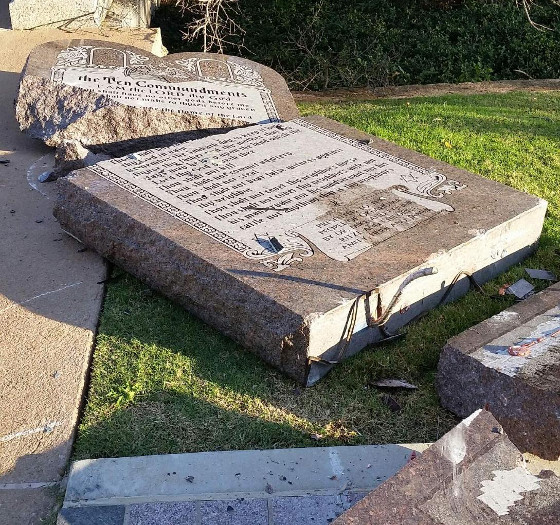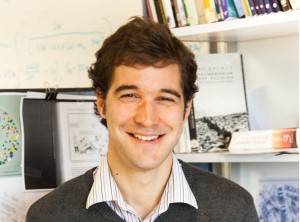Eoin O’Mahony’s work reflects a growing and consolidating movement in the Geography discipline over the last 15 years, which after a history of stops and starts, has made significant progress in attempting to understand spatiality of religion. This movement has moved away from ontological assumptions of sacred and profane space (Eliade, 1957) and the privileging of the institutional manifestations of religion over informal and often non-representational forms of spirituality (summarised in Park, 1994): Geographies that privileged institutional, regional and national structures of religion at the expense of the local and personal scales. In an assessment of the field, Kong (2001) observed the movement towards understanding the construction and consumption of sacred space (for example Chidester and Linenthal, 1995) and called for a shift in focus to the informal and unofficial geographies of religion, challenging the narratives of global secularisation. This call paralleled a shift in focus within more sociologically orientated studies in religion towards ‘the spiritual revolution’ (Heelas and Woodhead, 2005) and an observed disconnect between forms of institutional belonging and popular beliefs (see Davie, 1994). In the wake of this work, Knott (2005) developed a spatial methodology for the investigation of religion, locating and defining the boundaries between religious and secular discourses within everyday life, practice and representation. Her methodology, drawing on Henri Lefebvre, reveals the religious within secular space through investigating how a space is promoted to users, how it is used by these people and how this space holds together both of these abstract and practical images. And this is where we find O’Mahony’s work.
In the interview, O’Mahony examines how contestation between the religious and the secular in Ireland unfolds ‘in particular places in particular ways’, with this tension manifesting in three case studies: (1) A series of Marion statues dispersed around Dublin; (2) the (annual) pilgrimage to the summit of Croagh Patrick in Country Mayo; (3) and the contestation between State and Church for the provision of primary school education in Ireland. Throughout these sites, religious and secular discourses make claims upon the space yet neither can fully establish themselves over the other. The Marion statues of Dublin are neither owned by the Church nor by local authorities yet they exhibit a concrete presence, informally and unofficially recognised in the landscape design of the parks they often inhabit as well as being reflected in the behaviour of those who used the park. Croagh Patrick is framed as a pilgrimage site to believers and promoted as a site for health, fitness and outdoor recreation to non-religious visitors. Finally, the case of primary schools in Ireland thrusts the issue of contestation between a secularising State power and that of the Church in the public arena with the recent political concern ‘to take religion out of schools’. Throughout these case studies, religious and secular discourses are found to compete, contest and co-habit with each other, providing distinct channels for the making of place through investing meaning and significance into a space.
A main theme underlying O’Mahony’s case studies in this interview is an exploration of the secular project to modify, regulate and moderate locality, including its religious ties, in order to decontextualise and universalise. He astutely criticises a discourse in which a linear progression assumes religious places are those spaces that have not yet been secularised; that secular ideas contest, replace and subordinate the religious within space without resistance. As he argues, religious places are not waiting to be secularised but exist inside and outside of public, secular space. Moreover, the local and contingent daily practices and behaviours of people produce meaning that is integral to the making of place for these inhabitants. As with other confrontations between the local and the global, we should be aware of the delocalising effect of attempts to remove religion from public spaces and the consequences this process has for those who dwell and invest meaning within these spaces.
In addition to this focus on the making of place through daily and recurrent religious practices, I would be keen to see further work on the multi-directional projection of this travel to include the channels in which this secular discourse are also resisted, partially resisted and appropriated by the actors present within a place. Linda Woodhead’s (2012) call for an awareness of both strategic and tactical scales of religion in everyday life, recognising the increasing influence of Michel de Certeau in the study of Religion and Geography is useful here. Everyday tactical practices are those, often unrepresented or non-representable, that enable the actor to manipulate the strategic practices of dominant hegemonies and discourse. The entangled nature of religion and the secular in public space is well illustrated in O’Mahony’s interview and it would be interesting in future research to hear more of the individual voices within these case studies as well as the competing public discourses and claims for these spaces.
With these case studies O’Mahony has neatly illustrated the potential of the geographic approach in drawing out the contestations, tensions and synergies of competing religious and secular voices in public and private spaces. His interview has provided an insight into the complex, multiple layers of space within which religion and the secular co-habit and interact in an Irish context, proving a value to the geographic approach beyond mapping material distributions of religious phenomena.
References:
Chidester, D. and Linenthal, E.T., eds. (1995) American Sacred Space. Bloomington: Indian University Press.
Davie, G. (1994) Religion in Britain since 1945: Believing without Belonging. Oxford: Blackwell.
Eliade, M. (1957) The Sacred and the Profane. New York; London: Harcourt Books.
Heelas, P. and Woodhead, L. (2005) The Spiritual Revolution: Why Religion is Giving Way to Spirituality. Oxford: Blackwell.
Knott, K. (2005) The Location of Religion: A Spatial Analysis. London; Oakville: Equinox Publishing Ltd.
Kong, L. (2001) Mapping ‘new’ geographies of religion: politics and poetics in modernity Progress in Human Geography. 25 pp.211-233.
Park, C.C. (1994) Sacred Worlds: An Introduction to Geography and Religion. London: Routledge.
Woodhead, L., ed. (2012) Strategic and Tactical Religion. University of Edinburgh, 10th May 2012. Religion and Society: Sacred Practices of Everyday Life Conference.



